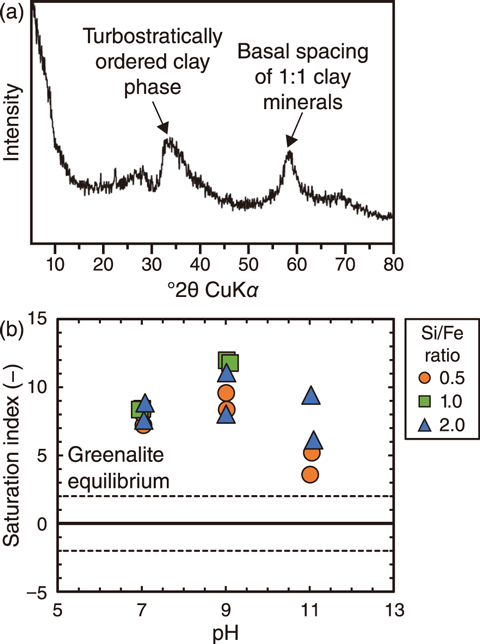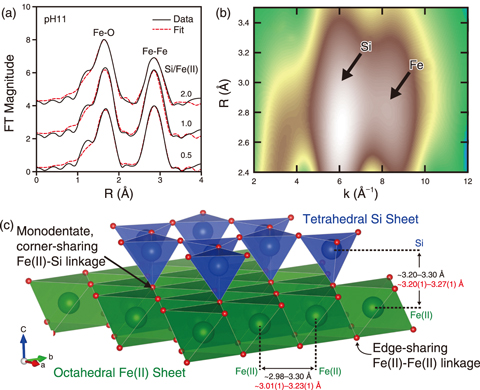
Fig.8-22 Solid mineralogy and solution chemistry

Fig.8-23 Local structure analyses using EXAFS
In the geological disposal of radioactive wastes, Fe (II)-Si interactions occur at the interface between the vitrified waste and steel overpack under reducing conditions. The resulting ferrous silicate phases regulate vitrified waste solubility, and serve as a diffusive and chemical barrier against the release of radionuclides from the waste. Understanding the role of ferrous silicates is critical for long-term repository safety assessments; this necessitates fundamental knowledge of ferrous silicate precipitates and their structure and what factors influence them.
In this work, we carried out ferrous silicate synthesis experiments under low-temperature (25 ℃), anoxic, and reducing conditions. We examined the role of solution chemistry, particularly Si/Fe(II) ratio and pH, on the structural characteristics of ferrous silicate co-precipitates. The precipitates that formed from the interaction of Fe (II)- and Si-rich solutions – simulating solutions from the overpack and vitrified waste – were characterized using X-ray diffraction (XRD), infrared (IR) spectroscopy and extended X-ray absorption fine structure (EXAFS) spectroscopy. These techniques provide information on phase assemblage, silicate structure, and Fe (II) local environment. We then correlated the structural results with thermodynamic calculations of solution saturation.
Our results show that Fe (II)-Si interactions readily result in the rapid precipitation of amorphous to poorly crystalline ferrous silicate phases (Fig.8-22(a)). Thermodynamic calculations predict the precipitation of ferrous clay phases (Greenalite: Fe3Si2O5(OH)4) (Fig.8-22(b)). This is supported by IR and EXAFS spectroscopy that reveal structures consistent with ferrous clay phases at all conditions (Fig.8-23); however, we observed significant variability in solid structure and phase assemblage with pH and Si/Fe (II) ratios. Ferrous clay formation is most pronounced at low-Si and high pH conditions; higher Si and lower pH reduces ferrous clay crystallinity, and results in amorphous silica precipitation.
These results offer insights on the structural variability of alteration zones at the glass/steel interfaces in a multibarrier system. These may be used to: (1) interpret the mineralogy observed in glass alteration studies; (2) refine thermodynamic datasets used to model secondary mineral formation during glass alteration; (3) and predict their impacts on long-term glass dissolution and radionuclide migration in the safety assessment of geological repositories.
This work was supported by the Agency of Natural Resources and Energy (ANRE), the Ministry of Economy, Trade and Industry (METI) of Japan, under “The project for validating assessment methodology in geological disposal (FY2017)”.
(Paul Clarence M. Francisco)